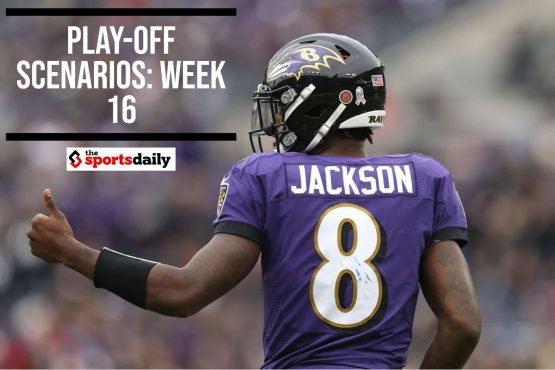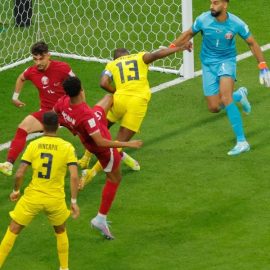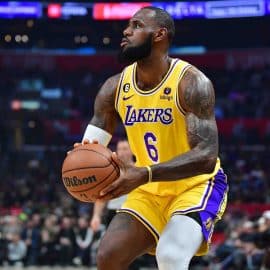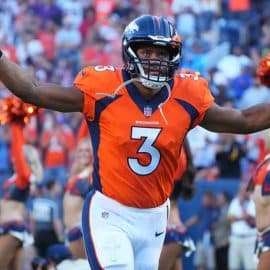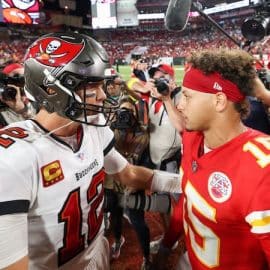
Not all “character concerns” are the same, and some carry drastically less weight than others. Though this breakdown reflects my opinion for the most part, many of these are also some of the same sentiments that some NFL teams feel as well. Debate is open and welcome.
15. Overall Attitude
A purposely general topic to start, this comes from just talking to a prospect casually or seeing how he treats others. Pretty much, this is “how he carries himself”. Though this likely won’t end up in the scouting report because there is nothing tangible to go off of, I have taken notice of a few prospects who I simply would not take as high as other because of their attitude when I have spoken with them, and others that I want in my organization because of how they act.
Example: Nolan Nawrocki’s “Fake Smile” comment on Cam Newton
14. Violation of Team Rules (results in minor suspension)
This generally can vary, and a violation of team rules can be anything from missing a team meeting to committing an NCAA violation. If the violation results in just one or a few games, it’s viewed as a slap on the wrist and generally these aren’t major infractions that will lead to reoccurring behavior in the NFL. They are taken into account, but can be quickly brushed off in interviews if the prospect can give a reasonable response.
Example: AJ Green Selling his jersey; Terrelle Pryor selling his memorabilia
13. Underage Drinking Violation
Breaking the law is always going to result in many questions from NFL teams, but as with many potential “character concerns”, teams understand that these are still college students who are going to potentially get into trouble with the law, just like any other college student. It’s still a concern because teams need to see if this was a mistake or a precursor to more erratic behavior, and multiple arrests could escalate this to a much more serious issue, but this can be swept under the rug if it’s isolated.
12. DUI
Similar to underage drinking in terms of potentially being excused, this goes a step further. DUI has become a much more serious offense in the eyes of the law, and it shows an extra step in being immature and reckless. Again, one isolated incident can be overlooked with a sign of remorse from the prospect, but a combination of this and others or repeated offenses could seriously escalate this to a much more serious concern.
Example: Michael Floyd repeated offenses
11. Marijuana Positive Drug Test
For the most part, this rarely turns up to NFL teams except for when a prospect gets involved with the law and is required to take a drug test, is guilty of possession, or tests positive at the NFL Combine. To the law and some teams, this is a serious offense and could be raised much higher depending on the franchise, but to others it’s viewed similarly to alcohol possession and underage drinking. Still, this can drop a players grade, especially if he’s viewed as a first rounder.
Example: Mario Manningham testing positive at Combine.

This usually can’t be a tangible set of evidence in determining a prospects character, but if teams notice it, it can make a world of difference. The most obvious example of why this scares team is Terrell Owens, who has been productive in his career but also was on his fourth team and likely will go to his fifth next year because of his on the field antics and media comments. Team’s don’t want “headache” guys that demand the ball on the field or make fine or suspension worthy comments to the media.
Example: Jonathan Baldwin showing frustration on the field, sharing frustrating with media.
9. Leadership in the Locker Room
Leadership can go either way on teams scouting report, especially when it concerns with position. For every position besides quarterback, leadership is either a positive thing or a non-factor, as most positions aren’t relied upon to be leaders in the locker room, but having it can add value. For quarterbacks, having leadership qualities is a must, as they are looked at as the franchise figurehead and the leader of the team on the field. If quarterbacks are viewed as not having great leadership skills, that could have a major impact.
Example: Jimmy Clausen, potentially Ryan Mallett falling on draft day; Tim Tebow going 1st round
8. Academic Dishonesty
To some, this is similar in weight to minor drugs and alcohol charges. However, in my opinion, this is potentially a much more serious concern. When a prospect takes shortcuts, risks expulsion, and doesn’t have his priorities in order, that is a huge concern about a person’s judgment and overall intelligence.
Example: Cam Newton reported academic dishonesty at Florida, Josh Portis transferring because of this.
7. Theft
A serious offense in the eyes of the law, the idea of stealing an item for a prospect that likely is on track to make money playing professionally shows a significant level of immaturity. Whether it’s as small as food from a store to jewelry at a shopping area to another college student’s personal things, theft is theft and it can prove that some players may not be able to be sufficient in a lifestyle with the money they can gain.
Example: Cam Newton having another student’s laptop.
6. Assault/Battery
Getting in practice squabbles can actually be viewed as showing a “mean streak” and actually help the prospect in the evaluation process. However, when it comes to getting in fights outside of the practice field and being charged with an assault charge is a major concern with teams, as it shows a short temper at times as well as a reckless nature in public. Whether it’s a bar fight, a street fight, a sexual assault, or an assault against a woman, this is a major factor in determining a prospect’s character and will be heavily investigated by teams.
Example: Jabaal Sheard assault charges in the Summer of 2010
5. Football IQ/Play Diagramming
This is totally determined by the position, though this could be a main factor depending on what the team values. Obviously, these prospects are going to need to continue to develop their football IQ and be able to dissect the playbook more and more. Running backs (vision), receivers (route diversity), offensive lineman (knowing assignments), linebackers (play reading) and secondaries (responsibilities) all can show something at the chalkboard. As for quarterbacks, this could be EVERYTHING to some teams, as not being able to handle a college playbook does not give a strong indication that he can handle a professional one.
Example: Cameron Newton concern about simplicity of college playbook and Gus Malzahn system
4. Practice Habits/Motor on the Field
In my opinion, the difference between a player with a high motor and one with some lackluster film in between games could be the difference in whole rounds of the draft. If a player doesn’t take practice seriously, lags around and doesn’t show the work ethic, and doesn’t stay consistent and focused throughout the game, he can’t be relied upon as a consistent starter or a guy who can be counted on consistently.
Example: Marvin Austin, Nick Fairley’s concern about motor on the field.
3. Violation of Team Rules (Kicked off Team)
As said early in the article, I talked about how a “violation of team rules” aren’t always released to the media, and could be anything from missing a team meeting to violating NCAA rules. If this “violation” results in a player being kicked off the roster, teams immediately need to lower their evaluations on prospects and go deeper in to finding out exactly what the problem was. While the talent may be there, this automatically worries teams.
Example: Kenrick Ellis, other top small school-ers that needed to transfer.
2. Gun/Weapon Involved Altercation
If you watch any NBA basketball or follow it at all, you likely heard of the Gilbert Arenas situation. He reportedly had a gun in the locker room, and was suspended for a very long period of time. And he didn’t even fire the gun. All professional leagues and teams take gun or any type of serious weapon around their teams very serious, and if a prospect goes as far as to use it or at least show it in public, it shows a serious lack of maturity and a disregarding of the law.
Example: Aqib Talib potentially getting cut after CBA because of he and his mother shooting at sister’s boyfriend.
1. Cocaine, Heroin, Serious Drugs
If a prospect has reported serious drugs uses, one of two things can happen. Teams can do their research and potentially find out it’s either a law, not nearly as serious as indicated, or the player has a problem and is untouchable. We’ve seen in the past with Dan Marino reportedly falling on draft day because of reported drug use (something I’ve also heard from people he went to high school with, but not totally confirmed). Now, reports of Ryan Mallett’s cocaine usage has dropped his stock (in the media that is) to the 2nd round, but if teams don’t find it serious, he could be right back into the Top 10 mix.
Example: Dan Marino in the past, Ryan Mallett’s reported concerns this year.
Add The Sports Daily to your Google News Feed!
